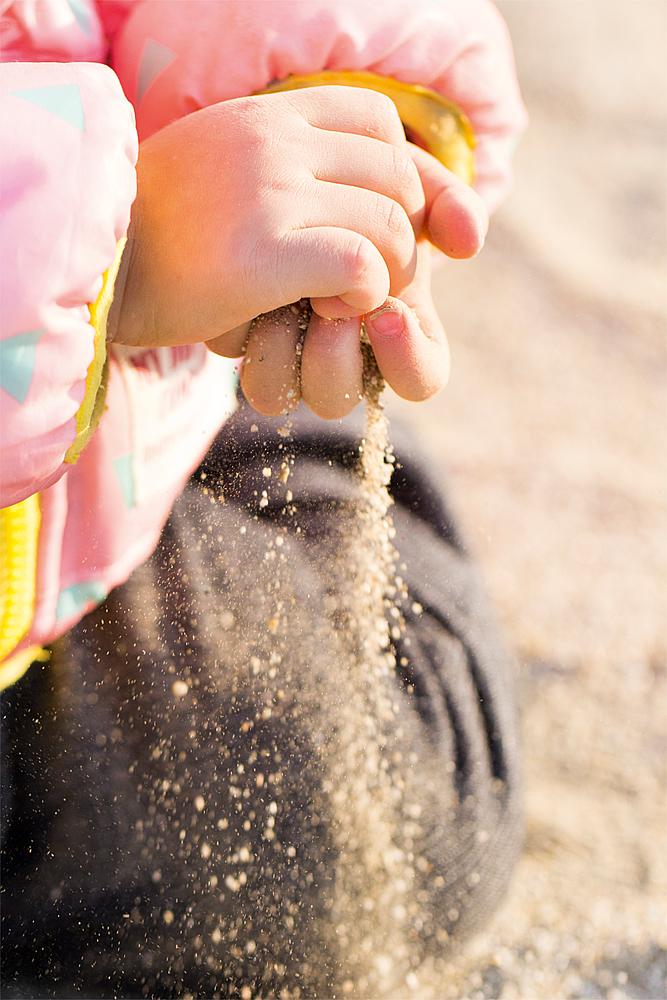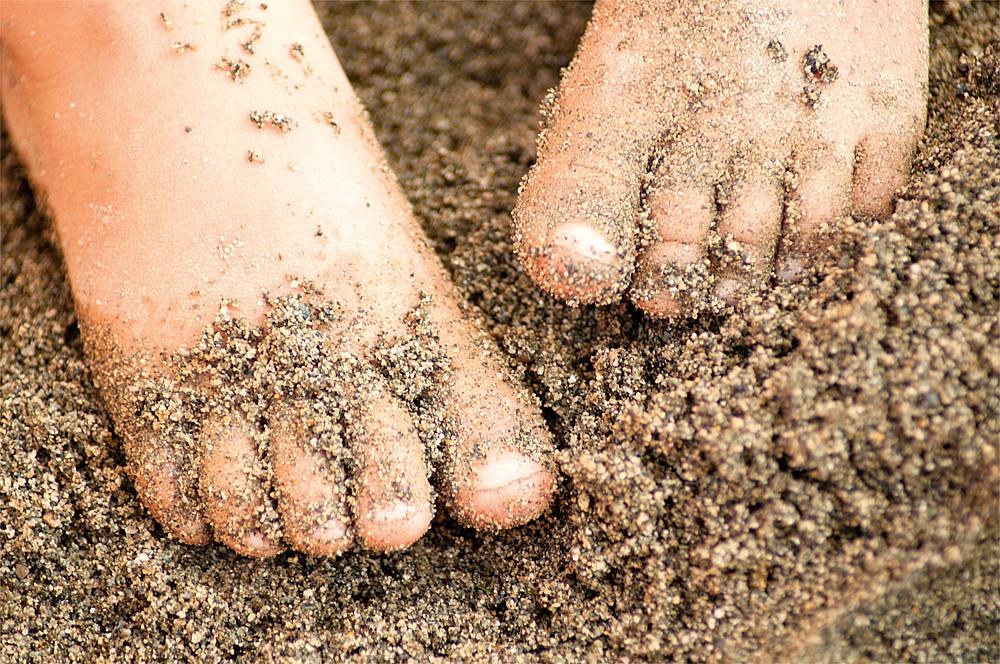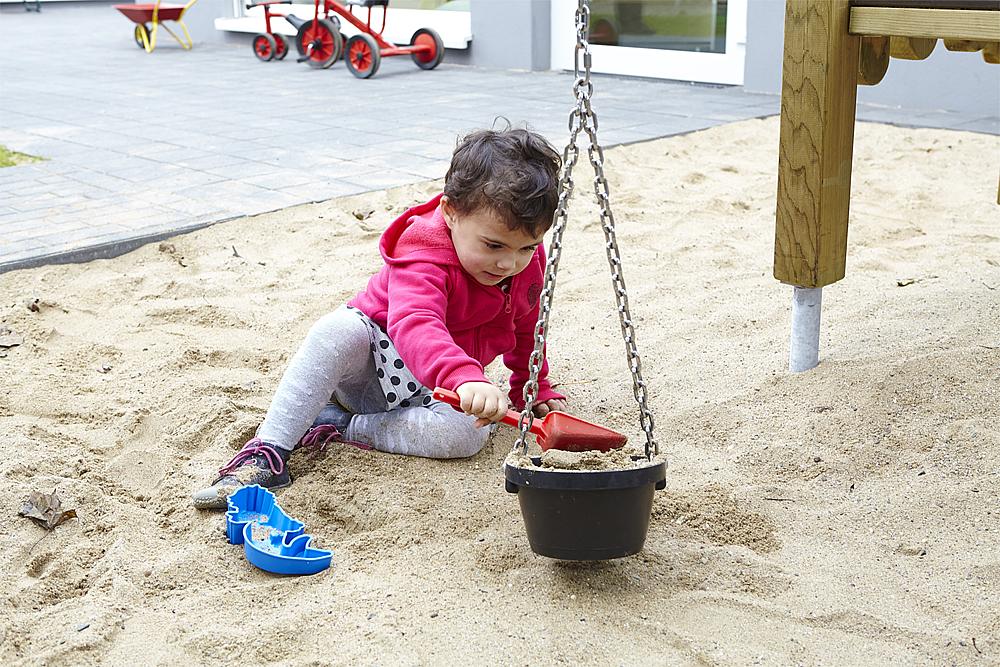Shovelling, digging, pouring, sifting – playing with sand is fun for every child. No wonder, because even the smallest ones can let off steam creatively with the material. Whether they are building tunnels, modelling figures or “baking” the classic sand cake, with sand, everyone can play exactly what they feel like – alone or together. And this even has an educational value, because playing with sand promotes perception. We show you why your sprout learns a lot in the sandbox.
Note: Of course, thanks to mud and sand, a lot of things get dirty – toys, clothes, and usually the children themselves. But, dear parents, it’s worth the effort! So don’t be afraid of a little dirt. Instead, just dip your hands in the sand yourself and enjoy the feeling.
Table of contents
Playing with sand trains perception
The child’s brain continuously takes in sensory impressions that it needs for development. These are impressions from the immediate environment, such as sounds, smells, optical information, but above all, tactile impressions. Such sensory experiences are the basis of learning, and children usually explore them through play. You can read more about the development of play in early childhood here.
Surely you have already observed how a toddler feels an object and puts it in his mouth as part of object play. This is a way of getting to know the object in question, testing its relationship to the environment – for example, by dropping it – and to itself – what does the object taste like? How does it feel? Playing with sand works in a similar way. Of course, it should not go into the mouth, but it offers children a variety of tactile stimuli through which they train their perception.
It is a unique feeling to let freshly sifted sand trickle between your fingers or to bury your toes in the sand. To bury one’s own legs or to draw something in smooth sand with one’s finger. Dry sand that has been warmed by the sun feels different from wet sand, and with even more water, it becomes malleable mud, but is usually heavier and colder. Soft or rough, powdery or soggy – sand can take on numerous shapes and offers children a true sensory paradise.


Playing with sand is “free play”
Play without rules and the need for encouragement
Free play is a form of play that takes place without any instructions from adults and does not require any active encouragement. The child occupies itself on its own – and that is a good thing. Children are still “new” to the world and not ultimately used to the rules that adults live by. That is why they see more possibilities in objects than adults and play much more creatively.
Toys in free play
Theoretically, children would not even need toys for free play. However, this does no harm if the intention behind it comes from the child itself: it decides itself which objects are incorporated into the game and how they are used. So constantly give your offspring toys that can be used in as many different ways as possible. This preserves the freedom for creativity, and your child is less likely to get bored because they learn to let their imagination flow into the game instead of following guidelines.
Playing with sand is free play because the medium can be used in many ways. Children can make something out of sand or see it as something else, such as ingredients or alternative material, and work on it with sand toys. It is not uncommon to use a shovel as an oversized spoon or a bucket as a hat.
Note: Adults do not have to like the way children play. If objects are “misappropriated” or used “upside-down”, this still makes sense to children in play. For adults, it is therefore important to exercise restraint and not to interfere. Otherwise, it is no longer free play.

Great play ideas for the sandbox
Of course, the sandbox offers far more possibilities than just digging in it. Here we have three simple game ideas for you that take advantage of the many properties of sand and are also a lot of fun:
Treasure hunt
Anyone can dig things in and out again. But what if you bury little “treasures” in the sand and your child has to look for them? That sounds a lot more exciting! Marbles, semi-precious stones or toy coins are perfect for this. Simply mark out an area in the sandpit and prepare it for the “treasure hunt”. If your little one doesn’t want to dig with his bare hands, you can of course, give him a shovel or discarded barbecue tongs to retrieve the treasures.
Marble run
Everyone knows that great roads for toy cars can be built in the sandbox. So how about a race track? With a little water, the loose sand becomes a stable surface, and if you build on a slope, you can even let something roll down the track. Cars will probably get stuck – maybe just give it a try. But what definitely rolls are smooth circular marbles! That just screams for a marble race. Or let your children work together as a team to see how many times they can extend the marble run without slowing it down.
Building canals
When building canals, the children dig deep to create channels in the sand, ideally with branches and at different heights. These channels will later be filled with water. Consequently, it is essential to stabilise them as much as possible so that the water can run through them without removing too much sand and thus changing the shape of the channels. For competition fanatics, of course, this also works, then the water is poured in on a start signal.

Important: When playing in the sandbox, children tend to forget the time. Especially in summer, this can pose a risk if the little ones are exposed to intense sun and the sandbox is not equipped with the appropriate sun protection. Here we give you an overview of which sun protection variants are suitable for outdoor use.
Playing with water also brings great sensory impressions. You can find out how children learn thanks to the element in our blog post “Water Play & Children: How Important Playing with Water is for Development”.

